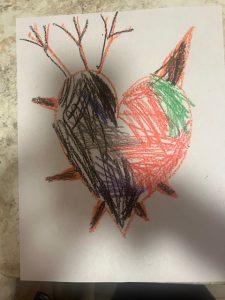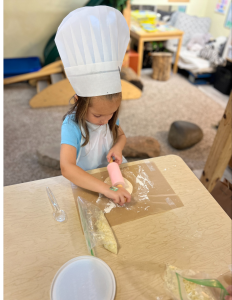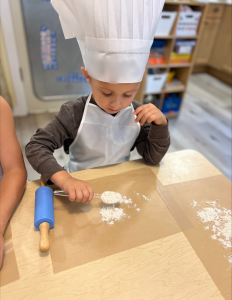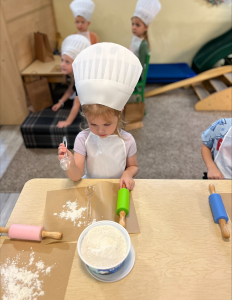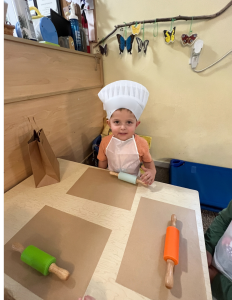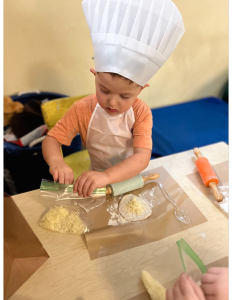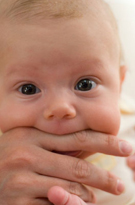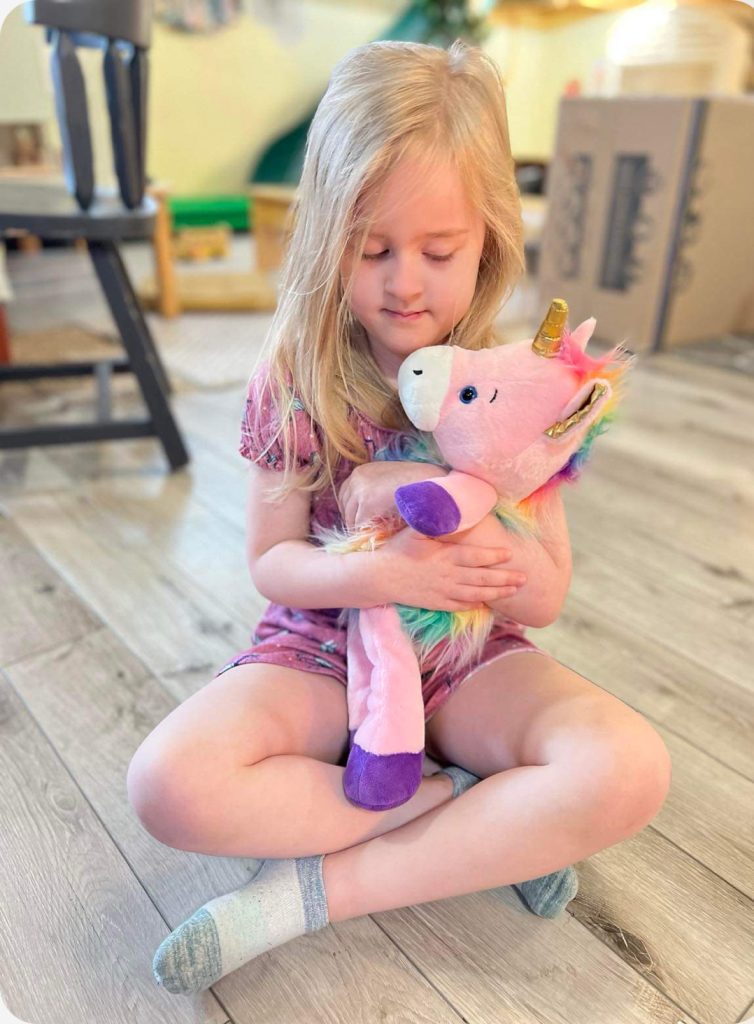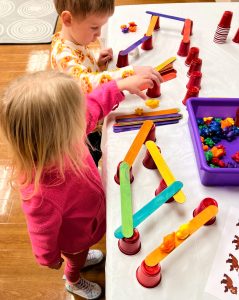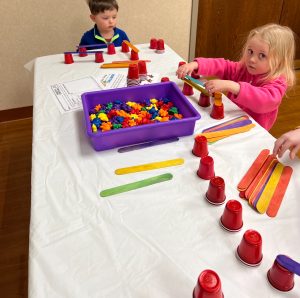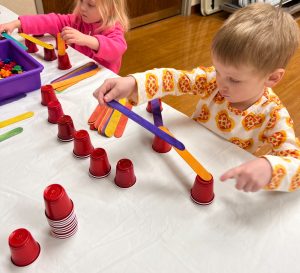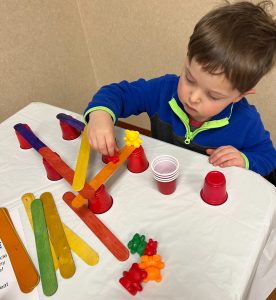Today was a painful day, our class frog, Leo Don Frog, died. I approached the death of our little frog as an opportunity to instill healthy coping mechanisms, equipping them with a foundation with which to approach similar losses throughout their lives.
When faced with this situation, here are some strategies for turning this sad experience into an important learning opportunity:
Be sensitive to their feelings, and be ready to accept any and all emotions. Some children may voice sadness, while others are more curious. They might ask questions that sound callous– remember that especially if this is their first experience with death, children may have no context for what has happened. Try to get to the bottom of what they’re asking. The permanence of death is hard for young children to understand, and children might ask to see or touch the body to better comprehend. Children will likely ask days, weeks, or months later where the pet is, potentially bringing up that sadness again.
We used the correct terminology by simply stating that Leo Don has died. An accurate and brief explanation helps children understand what has happened. Using phrases like “he’s resting” or “he was sick” can worry children– will they one day rest and not get up? What will happen next time they have a cold or stomach bug? Communicate with families as well. Some families may be less comfortable with these discussions than others, and you’ll likely have a variety of spiritual beliefs within your group. Let families know what you discussed so they can add on their beliefs and reinforce children’s understanding at home.
Grief is a difficult process, but the sense of love in our classroom allows us all to have strength together as we experience the loss. Encouraging and facilitating conversations today was hard but we will hold little frog in our hearts.
Stephanie McKinstry of Caterpillar Clubhouse Nature Preschool talks with Town Square’s Lizz Nolasco about her experience working with a coach through Indiana’s quality rating and improvement system.
If you’re interested in receiving coaching, either one-on-one or as part of a group, contact SPARK coaches here: SPARK Coach Supports – SPARK Learning Labs
Baking with preschoolers is has so many academic benefits. It helps develop their fine motor skills through many actions like mixing, pouring, and kneading dough. It also enhances their language skills by introducing new vocabulary related to baking, improves hand-eye coordination, and teaches basic math concepts through measuring, sequencing and following steps in order. They also learn about cause and effect, temperature, floating, melting, freezing and (sometimes!) burning.
While you’re waiting for the rolls to bake, the children might be offered the opportunity to draw their process to make a recipe card to share with their families.
Our recipe:
Materials:
- Parchment paper
- Rolling pin
- Baking Sheets
- Pastry brushes
- Flour
- Dough (can be found frozen or refrigerated)
- Butter
- Cheese and other toppings!
- Pre heat oven to 350º
- Wash your hands and the table you are working on
- Tape down parchment paper, about the size of a lunch tray (I just used scotch tape to tape it down so it didn’t move)
- Flour on the paper
- Roll out your dough
- Add shredded cheese and pepperoni (we counted 5)
- Roll it to make a roll brush melted butter on the top
- Bake for 10-12 minutes
- Let cool, eat and enjoy!
Town Square Research to Practice Statements offer information from theory and research with examples and suggestions for what it means in your work with children. This series of position statements includes topics such as the benefits of a home-like environment, the power of open-ended materials, and the benefits of incorporating the arts.
Making Grand-Friends
The concept of “non-family intergenerational interactions” is centered around the simple idea that old and young can bring new energy, knowledge and enthusiasm to each others’ lives. Prior to the COVID-19 pandemic, we had a relationship with a retirement community, where several of their residents would travel to our preschool regularly to read and play with the children. Since restrictions have been lifted, the Caterpillar Clubhouse Nature Preschool children have been traveling to the retirement community instead, every other week, to visit their grand-friends.
I was in awe that the simple presence of our preschoolers made such a difference in these grand-friends lives. I noticed how the kids completely accepted the physical and mental differences around them with such natural grace. And gained a sense of connection across the generations. Too often we underestimate the power of a hug, smile and children’s laughter…. I believe in the respect and dignity of life for people of all ages, young and old. This core belief is the thread interwoven through the fabric of our program.
What the groups do when they meet can be as relaxed as playing with play dough, a balloon game or reading a book together.
Valuing Older People
Older adults have a need to contribute to the next generation, and that doing so can give older people feelings of accomplishment or success, rather than stagnation, as they age. Intergenerational activities show elders that they are valued as individuals that still possess lifelong skills, rather than being passive recipients of care. One lady who attended the care facility told me that you don’t think about your age when you are in the company of young children. The little ones brought a new sense of vibrancy and fun to the center, and the focus was no longer on watching time pass but on living in the moment.
These days traditional families are separated by distance, time and lack of understanding between generations, but programs that bring children and older adults together could change the whole of society’s outlook.
Early Childhood Education is about building relationships. Research shows that students who have healthy intergenerational relationships have better self-confidence as well as a greater sense of empathy and tolerance. Children also develop a positive sense of aging and the interactions between generations reduce fear of older adults. Relationships between the children and elders also reduce fear of various abilities and disabilities.
Quote of the day: Grand-friend: I didn’t even know I needed that hug until I just received it.
Preschool students, Primrose residents find friendship in one another | News | kokomotribune.com
As part of our social emotional learning curriculum, we read a story about a different social-emotional concept using sight, touch, and sound to engage children and solidify the skill-building process.
I always incorporate a stuffed animal that correlates to a different social or emotional need. For example, unicorns for creativity, bears for feeling love, sloths slowing down, snail feeling brave. My goal is to tell a story or read a book I find about that SEL goal and pass the stuffed animal around and help them believe in themselves and their abilities. To remind them we can get through hard times, and we don’t have to do it alone.
Daily we work on positive affirmations and the idea that their opinions about themselves matter. We’ve also talked about how to handle difficult situations and when to ask for help. Being a teacher, I’m doing everything in my power to help guide, kind, empathetic, and strong kids.
Social Emotional Learning is instilling feelings of self-worth into our kids. We use affirmations in response to many situations, like conflict-resolution needs, self-esteem needs, and emotional regulation needs to name a few. And using affirmations daily I notice the kids pulling out these types of positive sayings on their own, without my initiation.
The specific skills the children are learning include:
- Interaction — physical touch, eye contact, and playfulness
- Connection — reading positive affirmations and having them repeat them to you (if possible)
- Reflection — practicing the learned concepts and skills
As teachers we honor the emotional lives of children and enable them to find the words to express themselves as they come to terms with their complex feelings.
In early care and education, family child care plays a vital role in nurturing young minds and providing a supportive environment for children’s growth and development. Family child care offers a unique setting where children receive personalized attention in a home-like atmosphere. One of the key factors contributing to the success of family childcare is the environment in which it takes place. In this blog post, we’ll explore how to set up an enriching environment for family childcare, fostering learning, creativity, and emotional well-being.
The physical space of a family child care setting should be carefully designed to promote safety, comfort, and exploration. Consider creating distinct areas for different activities such as play, learning, and quiet areas. Use child-sized furniture and equipment to encourage independence and engagement. Neutral colors, child created artwork, and age-appropriate toys can stimulate curiosity and imagination.
Play is a crucial aspect of early childhood development, serving as a vehicle for learning and socialization. Incorporate a variety of materials and activities that encourage exploration, problem-solving, and creativity. For example, provide open-ended toys like blocks, puzzles, and art supplies that allow children to experiment and express themselves freely. Outdoor play areas are also beneficial for gross motor development and sensory exploration.
Consistency and structure are essential for young children, providing a sense of security and predictability. Establishing a daily routine that includes time for play, learning, meals, and rest helps children feel comfortable and helps manage behavior. Displaying visual schedules can help children understand and anticipate the day’s activities. Flexibility is key, but maintaining a general rhythm can contribute to a positive childcare environment for both children and caregivers.
Family child care offers the opportunity for meaningful relationships to grow between caregivers, children, and families. Create a warm and welcoming atmosphere where children feel valued, respected, and supported. Take the time to listen to their thoughts and feelings and engage in meaningful interactions that promote language development and emotional intelligence. Building strong partnerships with families through open communication and collaboration is also essential for providing consistent and responsive care.
As caregivers, it’s crucial to stay informed about best practices in early childhood education and to continually reflect on and improve practices. Attend training sessions, workshops, and conferences to stay updated on the latest research and trends. Seek feedback from families and colleagues and be open to trying new approaches that better meet the needs of the children in your care.
Family childcare offers a unique and valuable option for early care and education, providing children with a nurturing and supportive environment where they can learn, grow, and thrive. By thoughtfully designing the physical space, promoting learning through play, establishing routines, cultivating positive relationships, and committing to continuous learning and improvement, caregivers can create an enriching environment that sets the stage for lifelong success.
Provider Stephanie McKinstry’s preschoolers arrived one day to a challenge: could they build bridges for bears to cross? How about a bridge big and strong enough for all of their bears to stand on at once?
The children got to work constructing their bridges from cups and popsicle sticks, arranging different shapes and patterns.
During construction, some bridge builders sang variations of “Going on a Bear Hunt”, like “Going on a Fish Hunt” because they knew that’s what bears like to eat!
If you want to do this in your own home, you’ll just need the following:

(if you don’t have counting bears, you can use buttons, game pieces, pompoms– really anything that isn’t too tricky to balance!)
Indiana providers: can you spot the Indiana Early Learning Standards being addressed with this activity?
This resource, from Megan K. Lerner, LCSW and Anthony T. Vesco, PhD, will help you work with families and children who are struggling with behavioral issues.
There are two versions of this resource, one to hand write and one to complete on the computer. 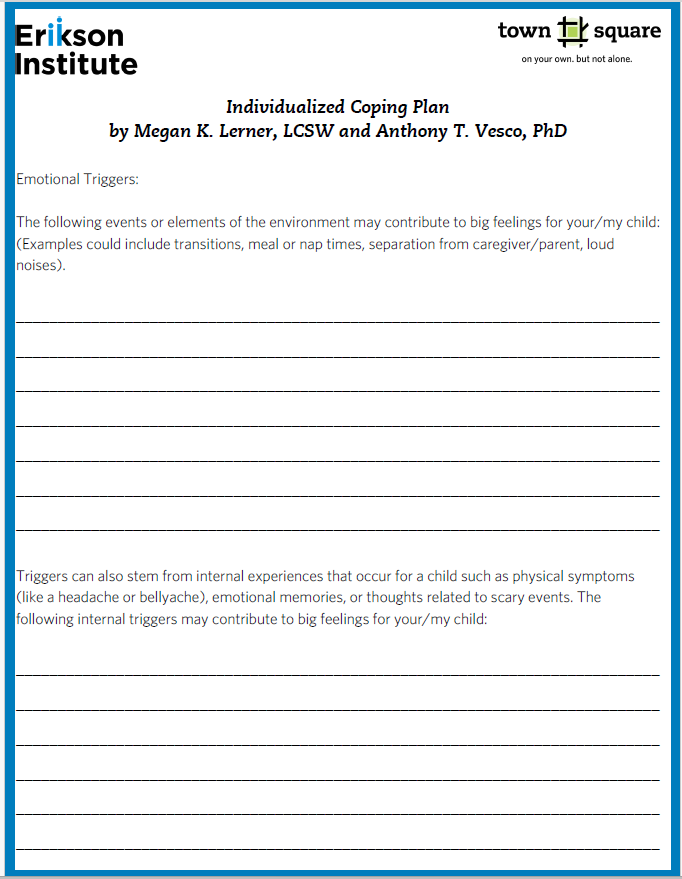
There are lots of common birds in Indiana that stick around for winter. Many of these are colorful favorites that evoke a winter feeling. Our two picks were Cardinals and Blue Jays.
Bird feeders are lively places during the winter months and their presence is important. Feeding winter birds can be a fun and educational activity for kids; they can learn about different species while also learning about their habitats, diets, and winter survival tools.
How We Explored Our Winter Birds:
- Create a bird observation center in your play area by setting up bird feeder stations. You can build your own from recycled materials such as milk cartons, recycled jugs or pinecones or purchase pre-made bird feeders.
- Next decide what type of bird seed you want to use. Investigate what types of food will attract which birds, and offer the children a choice of which they’d like to try– or fill one feeder with one type, and a second with another, and encourage the children to compare which birds they see around each.
- Placing feeders by a window for indoor viewing is an excellent idea for those cold winter days. You can create a chart on a whiteboard or large sheet of paper so they can check off birds they see on it.
- After a few weeks, compile your observations looking for patterns in birds observed at your feeders at different times of the day. Discuss the results.
For more bird-bassed fun, try these:
- Make bird seed play dough for your table activity or sensory table. Try picking up seeds with different shaped tongs and notice which is the most successful for different kinds of seeds.
- Go on a bird feather hunt and research to identify the bird it came from. Record children’s hypotheses and look for a live match!

